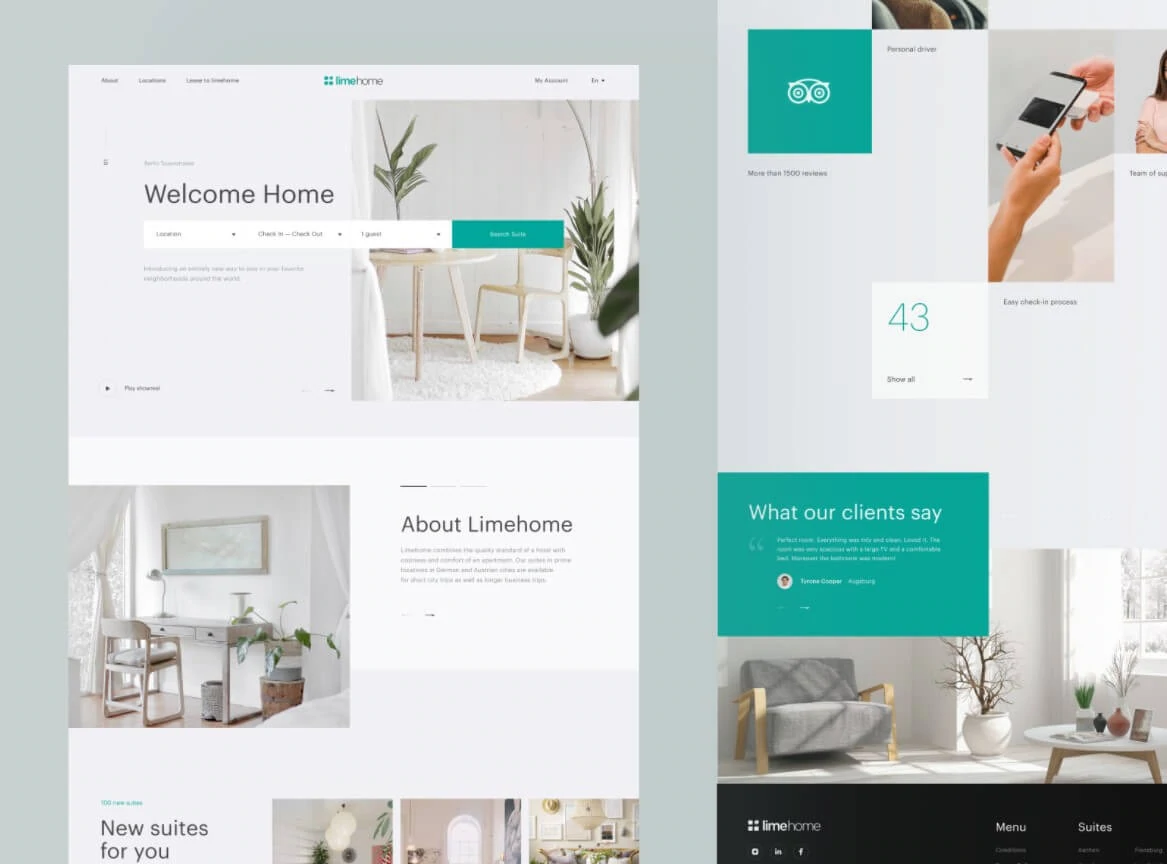Future-Proof Your Company with Innovative Website Design Trends
Future-Proof Your Company with Innovative Website Design Trends
Blog Article

Crafting a User-Friendly Experience: Vital Aspects of Efficient Site Style
In the realm of internet site design, the significance of crafting a straightforward experience can not be overstated. Essential elements such as a clear navigating framework, responsive layout concepts, and fast packing times function as the structure for involving individuals successfully. Moreover, an user-friendly individual interface coupled with easily accessible web content standards ensures that all people, despite ability, can navigate effortlessly. Yet, regardless of these essential concepts, lots of websites still fail in providing this smooth experience. Understanding the hidden elements that add to efficient style can lose light on how to boost customer complete satisfaction and involvement.
Clear Navigating Structure
A clear navigating framework is essential to effective website style, as it straight influences user experience and interaction. Users should be able to find info effortlessly, as instinctive navigation decreases irritation and urges expedition. A well-organized design allows site visitors to understand the partnership between various web pages and material, bring about longer website sees and raised interaction.
To accomplish clearness, developers need to use acquainted patterns, such as side or top navigating bars, dropdown menus, and breadcrumb tracks. These aspects not just boost use yet additionally provide a sense of positioning within the site. Preserving a regular navigating structure across all web pages is important; this experience assists individuals expect where to find desired details.
Additionally, including search performance can better help users in finding particular web content promptly. In recap, a clear navigating structure is not merely a design option; it is a calculated element that considerably impacts the total success of a web site by cultivating a reliable and delightful user experience.
Responsive Layout Concepts
Effective web site navigation sets the phase for a seamless individual experience, which comes to be a lot more crucial in the context of responsive style concepts. Responsive style makes certain that sites adjust fluidly to various screen dimensions and positionings, boosting availability throughout gadgets. This flexibility is achieved with adaptable grid layouts, scalable photos, and media queries that permit CSS to adjust designs based upon the tool's attributes.
Key concepts of responsive design consist of fluid formats that utilize percentages instead than taken care of units, making sure that elements resize proportionately. Additionally, utilizing breakpoints in CSS enables the style to transition smoothly between different gadget sizes, enhancing the layout for every screen type. Making use of receptive images is additionally important; pictures ought to immediately readjust to fit the display without shedding high quality or creating design changes.
Furthermore, touch-friendly user interfaces are critical for mobile users, with properly sized switches and instinctive motions improving customer interaction. By incorporating these concepts, designers can develop web sites that not just look aesthetically pleasing but likewise supply interesting and practical experiences across all tools. Ultimately, efficient responsive layout promotes individual satisfaction, reduces bounce prices, and motivates much longer interaction with the content.
Rapid Loading Times
While individuals progressively expect sites to fill swiftly, quick packing times are not just an issue of convenience; they are important for keeping site visitors and enhancing overall customer experience. Research study indicates that individuals generally abandon internet sites that take longer than three secs to load. This desertion can cause enhanced bounce prices and decreased conversions, inevitably hurting a brand name's track record and revenue.
Quick packing times boost user interaction and contentment, as site visitors are much more most likely to explore a website that reacts swiftly to their communications. Additionally, internet search engine like Google focus on speed in their ranking formulas, meaning that a slow-moving internet site may battle to attain presence in search results page.

Instinctive Interface
Fast filling times lay the groundwork for an appealing online experience, yet they are just component of the formula. An user-friendly individual interface (UI) is important to make sure site visitors can navigate a site effortlessly. A well-designed UI enables customers to accomplish their objectives with very little cognitive lots, promoting a seamless interaction with the site.
Crucial element of an intuitive UI include consistent layout, clear navigating, and well-known symbols. Consistency in style elements-- such as color pattern, typography, and switch styles-- assists customers understand just how to engage with the web site. Clear navigation frameworks, including sensible menus and breadcrumb routes, make it possible for individuals to find details rapidly, decreasing irritation and improving retention.
Additionally, responses systems, such as hover effects and filling indications, notify users about their actions and the internet site's response. This transparency cultivates trust fund and urges ongoing interaction. Focusing on mobile responsiveness guarantees that customers delight in a natural experience across gadgets, catering to the varied means target markets accessibility material.
Obtainable Content Guidelines

First, make use of clear and uncomplicated language, staying clear of lingo that might perplex visitors. Stress appropriate heading frameworks, which not only aid in navigating but also aid screen readers in analyzing material pecking orders effectively. In addition, supply alternate text for photos to communicate their definition to individuals who depend on assistive technologies.
Comparison is another vital component; guarantee that text sticks out against the history to boost readability. Ensure that video and audio web content consists of records and subtitles, making multimedia available to those with hearing problems.
Finally, include keyboard navigability right into your design, enabling users that can not use a computer mouse to access all website features (website design). By sticking to these easily accessible material standards, internet designers can create comprehensive experiences that satisfy the requirements of all customers, eventually enhancing individual involvement and contentment
Verdict
Finally, the assimilation of essential aspects such as a clear navigating framework, receptive design principles, quick filling times, an user-friendly interface, and obtainable content standards is important for creating an user-friendly website experience. These index components jointly boost usability and engagement, making sure that individuals can effortlessly connect and navigate with the site. Focusing on these style components not just enhances general fulfillment yet likewise cultivates inclusivity, accommodating diverse user demands and choices in the electronic landscape.
A clear navigation framework is essential to effective web site layout, as it directly affects customer experience and involvement. In summary, a clear navigation framework is not merely a layout choice; it is a calculated aspect that substantially influences the general success of a web site by promoting a pleasurable go to website and reliable user experience.
Furthermore, touch-friendly interfaces are critical for mobile customers, with appropriately sized buttons and user-friendly gestures boosting user communication.While customers increasingly anticipate sites to fill promptly, fast filling times are not simply an issue of benefit; they are vital for my company retaining site visitors and enhancing general individual experience. website design.In final thought, the combination of important elements such as a clear navigating framework, responsive design principles, quickly packing times, an user-friendly individual interface, and obtainable web content guidelines is crucial for producing an user-friendly web site experience
Report this page